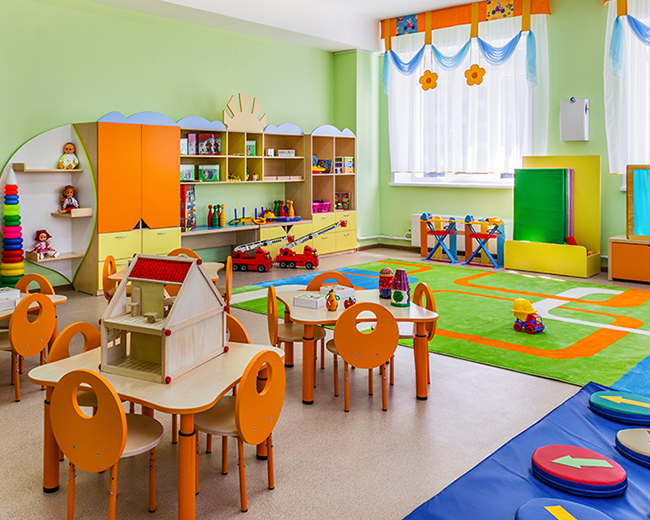Strategies for Working with Mixed-Age Groups in Early Childhood Education
There are many benefits of multi-age classrooms for children. However, these types of classrooms can present management challenges. This article offers several strategies and practices that teachers can use to make the most of mixed-age groups in early childhood education.
The Universality of Mixed-Age Groups in Childhood
You might have grown up in a city in which you and other children would play in backyards or streets, only going home when the streetlights flickered on. Or maybe you grew up in a rural environment where you and your friends would build forts in the forest and trap minnows in the creek. Or perhaps you grew up in a very close family, and you and your siblings spent hours creating pretend worlds and playing video games.
While your childhood experiences vary greatly from other’s experiences, there is one thing you probably had in common: You probably interacted regularly with a group of other children—some that were older than you and some that were younger than you.

Benefits of Multiage Classrooms
Grouping children in narrow age cohorts from infancy is a fairly new practice. For most of human history, children played, learned, and lived in groups that contained a variety of ages. Some educational theorists see great value in multi-age groupings.
- Children learn from each other. Older children pass on information and knowledge gained from past experiences.
- Younger children can learn social expectations and appropriate behaviors as older children shape these through unconscious social pressure and group norms.
- Older children develop leadership skills and also demonstrate increased empathy and nurturing skills.
- In an educational setting, multi-age classrooms allow children to stay with the same teacher for more than one year. This can create a stronger attachment, which invariably leads to greater development in all domains.
Mixed-Age Management Strategies and Practices
While there are many benefits to multi-age groupings, this type of classroom arrangement can be challenging for teachers to manage. If you find yourself in such a situation, here are some practices that can make your job easier.
Incorporate open-ended materials and loose parts
Open-ended materials are those that can be used in multiple ways. A puzzle can only be used in one way, and it would be difficult to find a puzzle that would be equally engaging for a child who is four and another who is eight. But a box of corks, wire, string, yogurt containers, and cardboard tubes can be used in countless ways. Even though children will use these materials in different ways, they will all find something that will inspire their thought and creativity.
Take advantage of children’s strengths
Children, especially older kids, can be very helpful in the classroom. Family-style meals can be easier when older children are around to help open milk containers. And story time can take on a new element when older children share their favorite children’s books with younger kids. Look for opportunities to invite all children into leadership roles and opportunities for them to share their strengths with others.
Be intentional about classroom design and materials
Take a critical look at your learning environment through the lens of each age group represented in your classroom. Is there comfortable seating for both an eleven-year-old and a five-year-old? Are there picture books and chapter books? Are there nooks and private areas that are accessible and attractive to all? Are there elements of the classroom décor that are interesting and meaningful to all children? Regularly schedule check-ins during which you look at your classroom to ensure it is still appropriate for the age groups represented in the current student population.
Keep older children in mind
Some studies have shown that multi-age groupings are more beneficial for younger children than for older ones. Be especially intentional about meeting older children’s needs in the classroom. While they can be helpful, it is important not to lean on them too much. Be sure to plan experiences and interactions focused on their needs as well. Consider creating an area in the classroom to be a “clubhouse” for the older children in the program. The older children can decorate their area (still allowing for supervision) and incorporate materials that are designed for their learning and entertainment needs.
There is no doubt that multi-age groupings can be beneficial to children. Teachers can also find great joy working in classrooms that feature many age groups. They may enjoy the variety that comes from interacting with children at different levels of development. And the deep attachments that grow over years enhance both parties in the teacher-child relationship. There is nothing like the feeling that comes from seeing that so-big twelve-year-old transition from your classroom, while still being able to see shadows of the little five-year-old who entered seven years ago.
Author Bio:
View All AuthorsMichelle Salcedo, M.Ed., Author, Speaker, Early Childhood Expert
Michelle Salcedo, M.Ed., has worked in the field of early childhood for over thirty years, starting as a teacher’s helper in her younger brother’s center. She has served as a teacher, director, trainer, and family educator in numerous childcare settings across Michigan, South Carolina, and Spain. Michelle has led the education initiatives of two of the largest childcare firms in the United States. Her articles on young children frequently appear in various electronic and print publications and...
Join the Free Spirit Publishing Blog Community
Subscribe by sharing your email address and we will share new posts, helpful resources and special offers on the issues and topics that matter to you and the children and teens you support.
